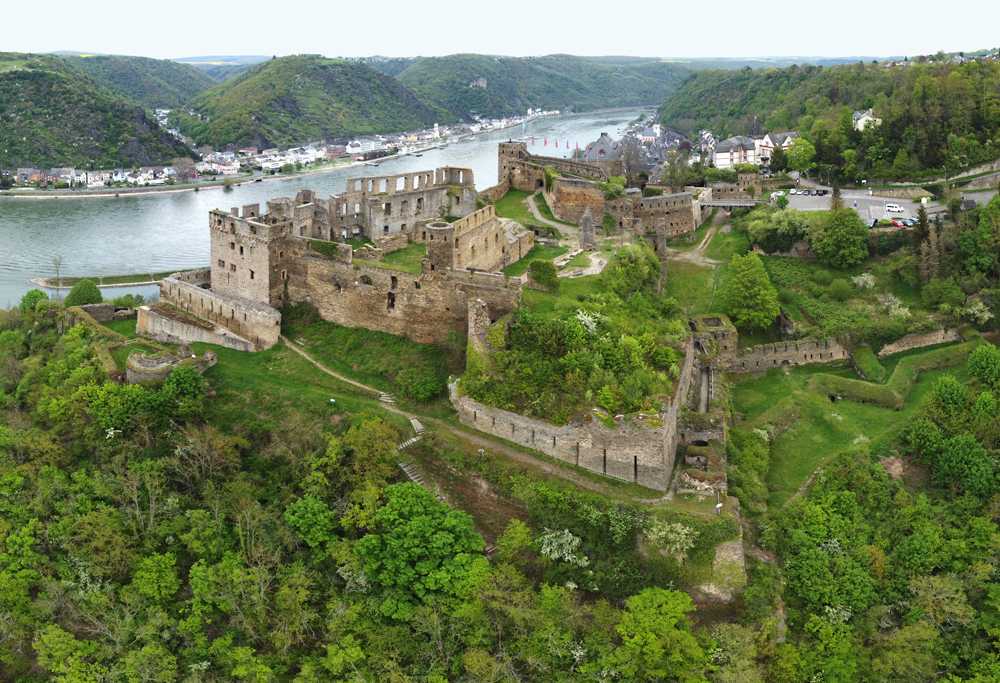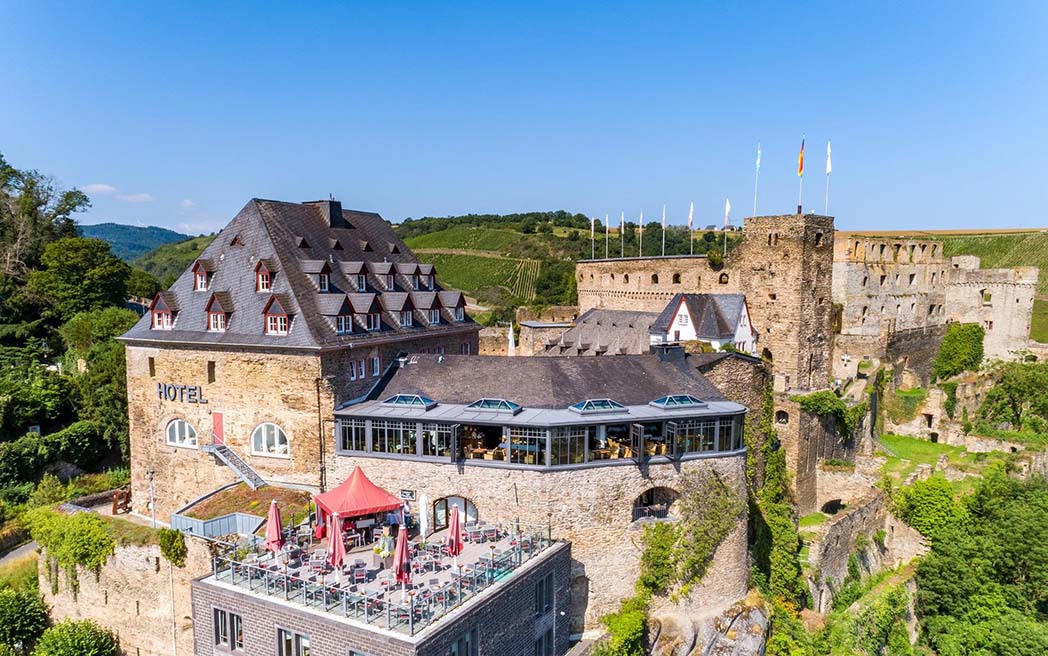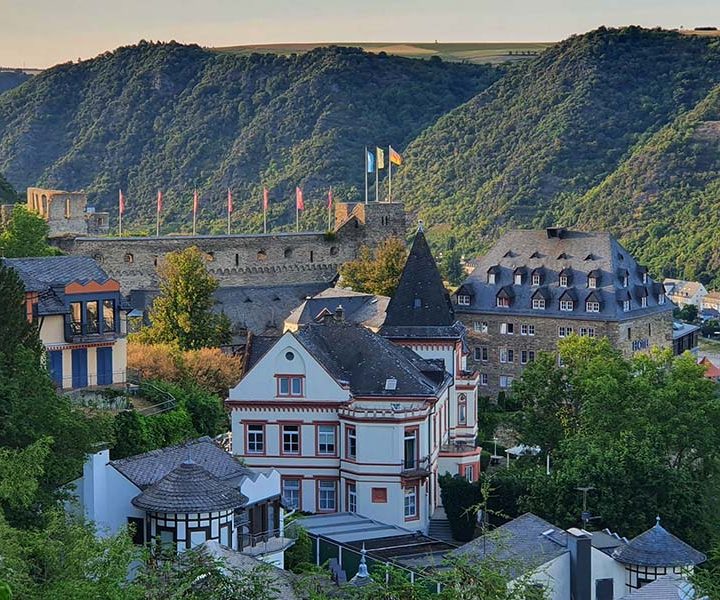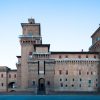Burg Rheinfels
Burg Rheinfels, a stunning fortress overlooking the Rhine River, offers one of the most fascinating glimpses into Germany’s medieval past. Known for its rich history, strategic importance, and impressive ruins, this castle stands as a testament to the defensive architecture of the Rhineland. It also reflects the feudal legacy of the region. Built in the 13th century, Burg Rheinfels is recognized not only for its historic significance. It is also considered one of the most remarkable castle ruins along the Middle Rhine Valley, a UNESCO World Heritage Site.
Location of Burg Rheinfels
Burg Rheinfels is situated near the town of St. Goar, in Rhineland-Palatinate, Germany. Perched atop a steep hill, the castle overlooks the scenic Rhine River and offers commanding views of the surrounding valley. This region of Germany is renowned for its picturesque landscapes, where medieval castles and vineyards coexist along the river’s banks. The location of Burg Rheinfels was chosen strategically, as its elevation allowed for panoramic views of the river and surrounding areas, offering both a tactical advantage and control over nearby trade routes.
Located in the Middle Rhine Valley, Burg Rheinfels stands as one of the prominent ruins in a region known as the “Romantic Rhine.” This area of the river is lined with fortifications and castles. It has historically attracted both adventurers and admirers of architecture and history. The castle’s placement was chosen with consideration to military defense. Its proximity to economic and political centers of the time was also a factor. This strategic position contributed to its historical role in controlling commerce and securing the region.

History of Burg Rheinfels
Burg Rheinfels was constructed in 1245 under the directive of Count Diether V of Katzenelnbogen. Originally, the castle was built as a defensive stronghold intended to protect the interests of the counts in the area. Burg Rheinfels played a significant role in regional politics and economics, especially by exerting control over river tolls and securing trade along the Rhine. This fortress, with its thick walls and strategically designed bastions, was among the most formidable structures of its kind during the medieval period.
In its early years, the castle underwent several expansions and fortifications. During the 14th and 15th centuries, additional buildings and fortifications were added. These included massive walls and towers, which transformed Burg Rheinfels into a small fortified town. The castle served not only as a defensive bastion. It also functioned as a center of governance and administration for the Counts of Katzenelnbogen. With its garrison, extensive storage facilities, and residential areas, Burg Rheinfels was equipped to withstand sieges for extended periods. It became one of the largest fortresses on the Rhine.
In the 17th century, during the Thirty Years’ War, Burg Rheinfels faced numerous threats but demonstrated its resilience. Remarkably, the castle withstood a major siege by a large force of French troops in 1692, earning a reputation as one of the most impregnable fortresses in the region. However, the eventual French occupation in the late 18th century during the Revolutionary Wars brought about its decline. In 1796, French forces under Napoleon dismantled large portions of Burg Rheinfels, reducing it to a ruin as part of a campaign to neutralize German fortifications along the Rhine.

Current status
Today, Burg Rheinfels is one of the largest and best-preserved castle ruins in the Rhine Valley. It attracts visitors from around the world. Efforts have been made to conserve the remaining structures. These efforts ensure that the castle remains accessible to the public while preserving its historical integrity. Visitors are now able to explore its extensive ruins. These include the remnants of walls, towers, and underground passages, which offer a vivid sense of its former grandeur.
The castle is currently owned by the town of St. Goar, which oversees its maintenance and tourist management. An on-site museum provides visitors with artifacts and exhibits detailing the history of Burg Rheinfels, including the lives of its former inhabitants, the architectural developments, and the impact of historical events on the fortress. Guided tours are available, offering insight into the architectural techniques and daily life within the castle walls, and allowing visitors to walk through the underground tunnels that once served as escape routes and storage spaces.
The remains of Burg Rheinfels continue to evoke the spirit of medieval Europe. Its setting along the Rhine adds to its charm and appeal. In addition to its historical value, the castle’s panoramic views of the Rhine Valley are remarkable. The surrounding vineyards offer visitors a unique experience. Events such as medieval fairs, concerts, and theatrical performances are held within the ruins. These events bring new life to the centuries-old fortress and connect contemporary visitors with its storied past.
Admission
Community features
Castle features
Video
Location
Official website
Featured listings














